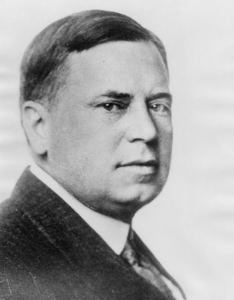SOLON & BEYOND: Rest of news from Solon Elementary School
 by Marilyn Rogers-Bull & Percy
by Marilyn Rogers-Bull & Percy
grams29@tds.net
Solon, Maine 04979
Good morning, dear friends. Don’t worry, be happy!
This is the rest of the Solon School News letter that I received last week. Solon Students Win District MEA Awards: Six Solon students are the recipients of awards in the RSU #74 MEA Awards Program. Awards are given to the student or students who receive the highest score in reading, math, and science in the district on Maine Educational Assessment each year.
Fifth grader Kaitlin Dellarma won the math award for her perfect score on the fourth grade MEA last spring.
Five Solon fifth graders received perfect scores in reading/English language arts on the fourth grade MEA last spring. Winners were Kaitlin Dellarma, David Dixon, Jillian Robinson, Veronica Hoffman, and Kaylynn Clark.
CCS sixth grader William Rogers achieved highest score in the district in science on the MEA he took as a fifth grader at the Solon School last spring.
Each winner received a certificate and a check for $50. Their names are displayed on a plaque at CCS. Thank you to Chet and Sara Hiskox and the Solon, CCS, and Garret Schenck PTO’s for supporting this award program. Congratulations to our winners!
As a Valentine’s day activity and an annual tradition, the students played Hearts in multi-age groups on February 13.
K-5 students who turned in their vacation week bingo cards got a chance to go snowshoeing with Ms. Rich in the fields behind the school on February 28. The bingo cards showed the healthy activities students did during vacation instead of screen time.
Solon Celebrates Happy Birthday Maine Week: During the week of March 13, Solon Elementary School celebrated the State of Maine’s 200th birthday with lots of special activities. These included daily guest readers (like Maine boxer Brandon Berry, dress-up days, daily trivia contests, and a “Munch & Learn” activity. We thank Mrs. LaChance and Mrs. Stevens for organizing the week’s events for us.
Again, I thank the person who sent me all of the things happening at our school in the past months and I hope and pray that things will be back to normal in the Spring.
Received the following e-mail from Sarah, Karla and Mary Lou, at HappyKnits, in Skowhegan.
Dear Yarn Friends, We wish we could see you in person, but until that day comes, we’d like to let you know of a few different ways you can replenish your yarn supply ( and support us here at Happyknits, too!)
Sarah is still happy to mail yarn, needles and accessories directly from Happyknits to you. Contact us via Facebook or email (leave a phone number , please) and she will call you back.
We’ve partnered with Berroco to bring you there 1-2-3 Dropship Program. It is as easy as 1-2-3: You (# 1)find a yarn or kit at Berroco, then contact Happyknits (#2) to place your order, and then (#3) Berroco ships your purchase to your house. By the way, they’re offering this for more than just Burroco yarns – Lang, Lopi and others are also acailable.
Making things with fiber is how many of us are staying focused these days. Let us know if we can help. Until we meet again, please keep yourselves safe! Sarah, Karla and Mary Lou.
There are several things that are keeping me going these difficult days: Praying, watching the many different birds at our feeders and knitting pin cushions as if they are going out of style! Knitting is surely a good way to calm down, I swear by it, but praying is at the top of my list.
Came across a recipe for “A Happy Marriage,” recently, and I’m sending it as Percy’s memoir: Take two happy people and separate them from their parents. Add the following ingredients in generous proportions: Love, Acceptance, Respect, Communication, Patience, Kindness, Gentleness, Self-Control, Commitment, Faith, Hope and Truth. Mix together, then thoroughly sift in daily life. Strain out jealousy, arrogance, selfishness, provocation and accounting of wrongs. Bake in the trials and tribulations of life for 50 years, then celebrate when golden. (This was hand written on a pretty piece of paper but it doesn’t say who thought up that good advice.) Hope you like it, and that it will help sooth you in these troubled times.

















